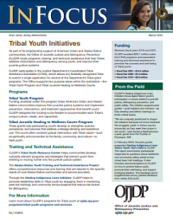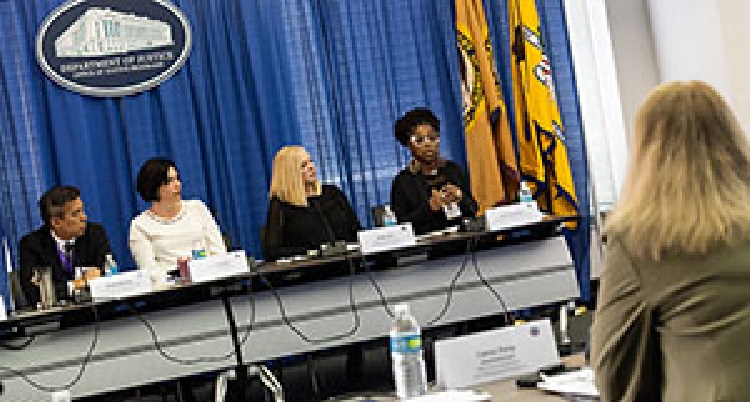Juvenile delinquency
Understanding the Criminogenic Properties of Vacant Housing: A Mixed Methods Approach
Examining the Impact of Victimization on Girls' Delinquency: A Study of Direct and Indirect Effects
Missing Child, Emergency Response, Quick Reference Guide for Families
Reducing Institutional Disorder: Using the Inmate Risk Assessment for Segregation Placement to Triage Treatment Services at the Front End of Prison Sentences
TECHBeat, February 2019
Juvenile Justice Reform Act Tribal Provisions Fact Sheet
Connect & Thrive: Maintaining Tribal Youth Connections During a Public Health Crisis
"Experience of the Expected?" Race and Ethnicity Differences in the Effects of Police Contact on Youth
The AMBER Advocate, Issue 1 2020
Assessing the Impact of a Graduated Response Approach for Youth in the Maryland Juvenile Justice System
An Evaluation of the Directional Relationship Between Head Injuries and Subsequent Changes in Impulse Control and Delinquency in a Sample of Previously Adjudicated Males
Get to Know the Office of Justice Programs
Posttraumatic Overmodulation, Callous-Unemotional Traits, and Offending Among justice-involved Youth
The Rolling Hotspot? Perceptions of Behavioral Problems on School Buses Among a Nationally Representative Sample of Transportation Officials
Disputatiousness and the Offender-Victim Overlap
Locked Out: Improving Educational and Vocational Outcomes for Incarcerated Youth
Federal Agencies Work Toward Reducing Opioid Impact on Youth
WASHINGTON, D.C. – The anecdotal evidence is staggering: Children as young as 12 raising their siblings because their parents are lost in addiction; kids who learn to count by separating pills for drug-addicted parents; juveniles adjusting to life with sober foster parents after spending years learning to cope with parents who were always high.
These were just a few examples provided by the Department...





